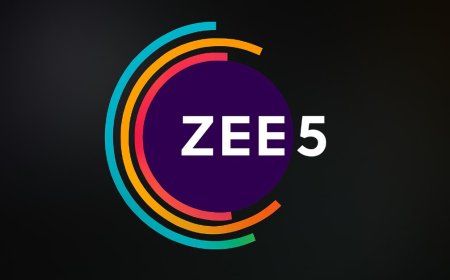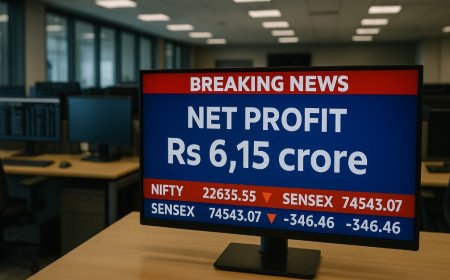Amazon India Introduces ₹5 Marketplace Fee, Aligns with Industry Shift
Amazon India introduces a ₹5 flat marketplace fee for every order, signaling a strategic alignment with industry trends while addressing rising operational costs and competitive pricing structures.

Introduction: Amazon's New Fee Signals Strategic Realignment
In a move that has captured the attention of sellers and industry observers alike, Amazon India has introduced a new ₹5 marketplace fee for every customer order fulfilled through its platform. This flat fee, applicable across categories, comes as the retail giant recalibrates its operations amidst growing competition, increased delivery costs, and a changing regulatory landscape.
The ₹5 charge marks a significant shift in Amazon's pricing model, particularly for a company known for its seller-friendly policies during its expansion phase in India. Now, as e-commerce matures in the country, the platform is making calculated moves to ensure long-term sustainability, even if it means mirroring similar strategies adopted by competitors.
What Is the ₹5 Marketplace Fee?
The newly implemented ₹5 marketplace fee is a flat charge that applies to every order placed by customers, regardless of the product's category or price point. Unlike other charges such as referral fees, shipping fees, or advertising costs, this marketplace fee is a base charge per transaction.
Key Highlights:
-
Applicable to every successful order placed on Amazon India.
-
Charged directly to the seller.
-
In addition to existing commission and shipping costs.
-
Implemented to cover fixed platform expenses such as packaging, logistics support, and marketplace maintenance.
This fee structure is already familiar to sellers on platforms like Flipkart and Meesho, where fixed per-order fees have existed for some time. Amazon’s adoption of this model reflects a broader shift across Indian e-commerce platforms, where sellers are being asked to contribute more toward platform operational costs.
Why Is Amazon India Introducing This Fee Now?
There are several reasons behind Amazon’s decision to roll out the ₹5 marketplace fee, all of which point to a tactical move designed to optimize operations while keeping pace with industry standards.
1. Rising Operational Costs
India’s logistics and supply chain costs have steadily increased due to fuel price fluctuations, warehousing expansion, and rising demand for last-mile delivery in Tier 2 and Tier 3 cities. A flat fee helps Amazon recover a portion of these baseline costs per order, regardless of item price.
2. Benchmarking Against Competitors
Platforms like Flipkart, Meesho, Snapdeal, and Ajio already have similar charges built into their seller models. Amazon’s new fee helps standardize its pricing framework, ensuring it remains competitive while also pushing for better margins in low-ticket categories.
3. Diversifying Revenue Streams
With intense competition and discounts reducing margins, Amazon is diversifying its income sources. A marketplace fee offers a predictable revenue stream that isn’t tied to product pricing or seller commissions.
4. Regulatory Pressures and Market Maturity
As regulatory scrutiny around deep discounting and preferential treatment increases, e-commerce giants are turning to transparent, flat fees instead of relying solely on performance-based incentives.
Impact on Sellers: Mixed Reactions and Strategic Adjustments
The ₹5 fee may seem nominal on the surface, but sellers dealing in high-volume, low-margin goods are expected to feel the pinch. For example, a seller moving 1,000 orders a day will incur an additional ₹5,000 daily in fees—₹1.5 lakh per month.
Small Sellers Most Affected
Many micro and small enterprises (MSMEs) on the platform rely on thin margins to compete. For these businesses, every rupee matters, and this fee may require a rethink in product pricing or operational strategy.
Mid and Large Sellers May Absorb the Cost
Sellers with higher average order values or those operating at scale may find it easier to absorb or redistribute this cost within their existing pricing structure. For some, the fee may even be offset by Amazon’s broader fulfillment infrastructure and promotional visibility.
Product Pricing Likely to Shift
Experts predict a slight rise in product prices across some categories as sellers pass on this cost to customers. Alternatively, sellers may bundle products or offer combo deals to spread the cost across a higher transaction value.
Amazon's Official Stand: Transparency and Platform Growth
Amazon India has positioned this fee as part of its platform sustainability initiative. In internal communications and seller outreach programs, the company has stated that the marketplace fee will help:
-
Improve delivery reliability and speed.
-
Maintain high platform standards and customer satisfaction.
-
Support technological upgrades across Amazon Seller Central and fulfillment centers.
-
Create a level playing field among all sellers, including emerging brands and established players.
The company emphasized that the fee is not a profit-making mechanism, but a tool to ensure the long-term viability of a high-growth, tech-led retail ecosystem.
Customer Experience: Will the Buyer Notice the Difference?
From a consumer standpoint, the introduction of this ₹5 fee is not expected to directly show up in billing or checkout pages. However, as sellers reassess margins, it may result in:
-
Slightly higher product prices, especially in sub-₹300 categories.
-
Reduced availability of free shipping or cashback offers on low-ticket items.
-
Possible bundling or “add-on” purchases encouraged to raise average cart value.
Despite these subtle shifts, Amazon’s robust Prime benefits and fast delivery promise are likely to keep customer satisfaction intact.
How the Move Aligns with Industry Evolution
This fee is not a standalone development. It fits into a larger pattern of e-commerce platforms in India:
-
Flipkart charges fixed per-order handling fees based on product categories.
-
Meesho charges commission-free rates for some products, but includes fixed order-level costs.
-
JioMart and Snapdeal are also evolving pricing models to increase platform sustainability.
What we’re witnessing is a system-wide recalibration, where platforms that once focused heavily on growth-at-all-costs are now streamlining revenue operations while preparing for deeper market penetration and IPOs.
Seller Suggestions: Adapting to the New Fee Structure
Sellers looking to remain competitive and profitable in this evolving landscape should consider the following strategies:
1. Bundle and Upsell
Combining products or offering bundled deals can increase average order value and spread fixed costs more effectively.
2. Revisit SKU Strategy
Sellers may want to prioritize products with better margins or streamline their catalog to focus on bestsellers that can withstand the fee.
3. Increase Use of Amazon Fulfillment (FBA)
Although it involves additional costs, using Fulfilled by Amazon (FBA) can help leverage visibility and logistics advantages that mitigate the impact of the new fee.
4. Incorporate Automation and Analytics
Using tools that track profitability per SKU, fee impact, and pricing elasticity can help sellers stay agile and adjust quickly to the fee implementation.
Conclusion: A Strategic Step in a Maturing E-Commerce Ecosystem
The introduction of a ₹5 marketplace fee by Amazon India is a small but telling move that signals a new phase of maturity for India’s e-commerce sector. It reflects the platform’s intent to realign its cost structure with sustainable growth models seen globally while offering transparent, flat-rate operational costs.
What's Your Reaction?
 Like
0
Like
0
 Dislike
0
Dislike
0
 Love
0
Love
0
 Funny
0
Funny
0
 Angry
0
Angry
0
 Sad
0
Sad
0
 Wow
0
Wow
0












































